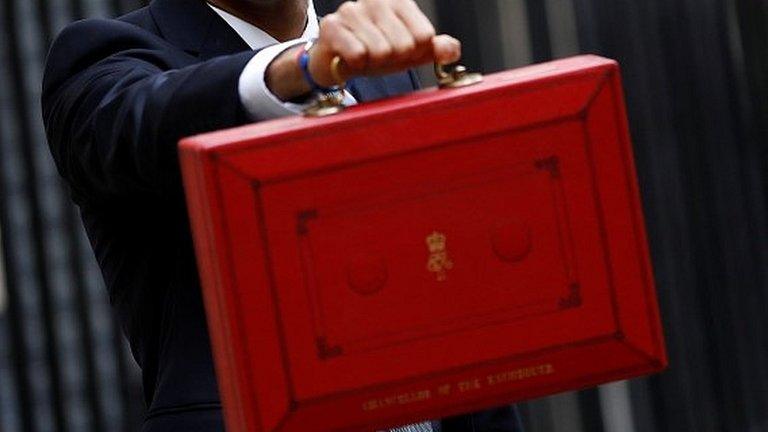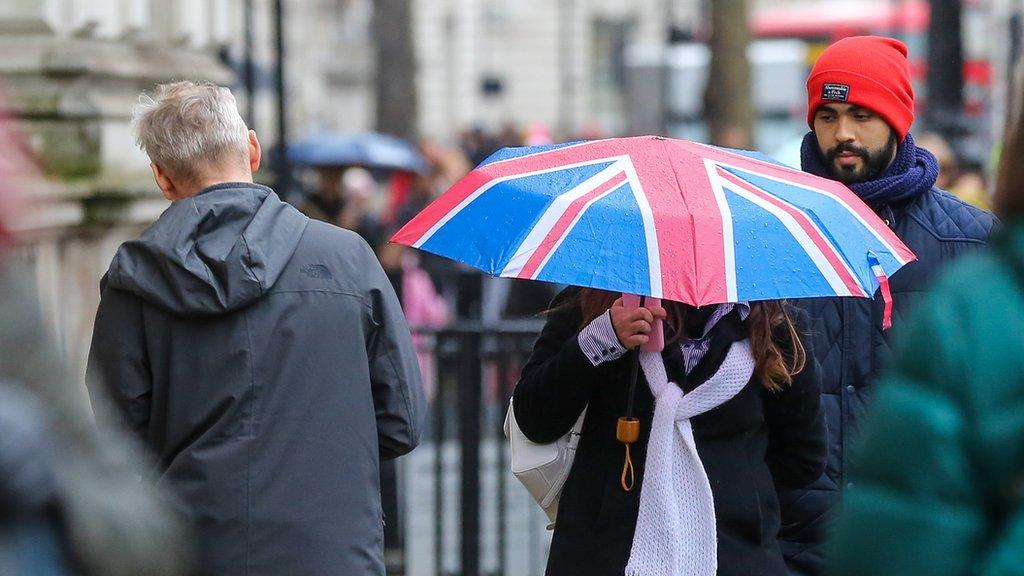Budget 2020: Chancellor unveils 'historic' spending rise
- Published
- comments
Budget 2020: 'This is two Budgets in one'
There were two Budgets here. And both were huge.
The first, the priority, was the immediate coronavirus challenge and the threat of a recession, identified by the Office for Budget Responsibility.
The numbers were substantial. A multi-billion pound stimulus plan that for the first time would see the state fund statutory sick pay for small and medium-sized enterprises, grant some cash handouts and suspend some business rates for one year. On top of this, there's at least £5bn to boost health spending.
The measures complemented the emergency rate cut from the Bank of England and provide a powerful bridge built on the assumption that the outbreak will be temporary. Both engines - monetary and fiscal - are on full power.
But the government also enacted its central manifesto offer - rather spectacularly - to borrow a huge amount of money to fund public services.
The numbers were eye-watering. They were historic. Rishi Sunak was not even 10 when we last had a Budget that pumped so much money into the economy: £175bn extra in spending, not just on infrastructure, as expected, but also on current spending.
In fact, most of the extra spending is on day-to-day departmental expenditure - including on tens of thousands of nurses, policemen, etc.
On infrastructure, the 3% of national income "limit" on spending, as the previous chancellor put it, appears to now be a target, basically hit in four years of the five-year Parliament.
That is massive sums to spend on the future ahead of the delayed Infrastructure Review. They take spending on capital to the highest sustained levels since the 1970s.

More on Budget 2020

But much of the fine detail of where this money will actually go - in terms of department, region and type of public service - is not settled.
Even the Treasury "Green Book" equation, that diverts spending towards places such as London, is being reviewed.
This is the start of a big spending process that will last the rest of the year, taking in a delayed National Infrastructure Review, a Comprehensive Spending Review and a further Budget.
"How is all this paid for?" is the question posed - and the answer, basically, is about £130bn of extra borrowing over the Parliament rather than tax rises, though revenue is raised from Corporation Tax and Entrepreneurs' Relief.
Whereas deficits were being phased out under existing Conservative plans, under this one, they become permanent. A structural change on economic policy that seeks to take advantage of historic lows in the interest rates that governments pay to borrow.
But this is a government with a lot on its plate. Driving all this through - with the coronavirus emergency, post-Brexit negotiations, preparations for a possible World Trade Organization-terms trading relationship with European Union, and running a significant deficit of near 3% - is not without its risks.
But this is one of the most consequential Budgets in a generation.
- Published11 March 2020

- Published11 March 2020

- Published11 March 2020

